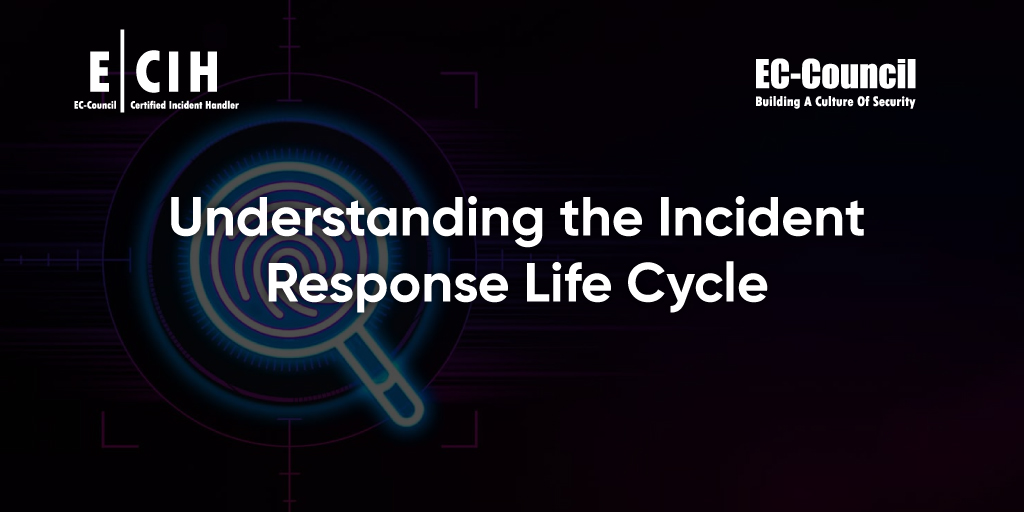Incident response management is an integral part of cybersecurity operations. Incident responders are the first to react to any security incident: They help organizations identify, contain, eradicate, and recover from the incident. Incident handlers help create incident management plans for detection and recovery procedures. Incident handlers—and the entire company—can use these plans in the event of a cyberattack. This article will cover what you need to know about the incident response life cycle and how to help businesses prevent, or manage the aftermath of, a cyberattack.
What Is the Incident Response Life Cycle?
The incident response life cycle is a series of procedures executed in the event of a security incident. These steps define the workflow for the overall incident response process. Each stage entails a specific set of actions that an organization should complete.
The Five Phases of the Incident Response Life Cycle
There are several ways to define the incident response life cycle. The National Institute of Standards and Technology (NIST; Cichonski et al., 2012) developed a framework for incident handling, which is the most commonly used model. The process outlined in the NIST framework includes five phases:
- Preparation
- Detection and analysis
- Containment
- Eradication and recovery
- Post-event activity
1. Preparation
In this phase, the business creates an incident management plan that can detect an incident in the organization’s environment. The preparation step involves, for example, identifying different malware attacks and determining what their impact on systems would be. It also involves ensuring that an organization has the tools to respond to an incident and the appropriate security measures in place to stop an incident from happening in the first place.
2. Detection and Analysis
An incident response analyst is responsible for collecting and analyzing data to find any clues to help identify the source of an attack. In this step, analysts identify the nature of the attack and its impact on systems. The business and the security professionals it works with utilize the tools and indicators of compromise (IOCs) that have been developed to track the attacked systems.
3. Containment, Eradication, and Recovery
This is the main phase of security incident response, in which the responders take action to stop any further damage. This phase encompasses three steps:
- Containment. In this step, all possible methods are used to prevent the spread of malware or viruses. Actions might include disconnecting systems from networks, quarantining infected systems (Landesman, 2021), or blocking traffic to and from known malicious IP addresses.
- Eradication. After containing the security issue in question, the malicious code or software needs to be eradicated from the environment. This might involve using antivirus tools or manual removal techniques (Williams, 2022). It will also include ensuring that all security software is up to date in order to prevent any future incidents.
- Recovery. After eliminating the malware, restoring all systems to their pre-incident state is essential (Mazzoli, 2021). This might involve restoring data from backups, rebuilding infected systems, and re-enabling disabled accounts.
Post-Event Activity
The final phase of the incident response life cycle is to perform a postmortem of the entire incident (Cynet, 2022). This helps the organization understand how the incident took place and what it can do to prevent such incidents from happening in the future. The lessons learned during this phase can improve the organization’s incident security protocols and make its security strategy more robust and effective.
Tips for Improving an Incident Response Plan
There are many ways to improve an organization’s incident management plan (HIMSS, 2022).
- Identify and train incident handlers in case there is a security breach. Ensure that all employees know their responsibilities when such an event occurs. These responsibilities may vary, but they will likely involve when to report an issue, who to contact, and what tools to immediately deploy in the event of a breach.
- Create effective communication channels across teams, ensuring that each person reports to their assigned contact. This helps ensure quick detection and recovery from any incidents in real time without losing much valuable information or data.
- Maintain logs for each system and update them regularly, leaving no gaps in the data. The creation of such logs can be useful in identifying the source of a security breach and preventing similar events in the future.
- Regularly test the incident response plan so that the documentation stays up to date with any changes made to security policies or new technologies introduced to the organization’s infrastructure.
Prevent Security Incidents with an Incident Handler Certification
At the end of the day, businesses need to ensure that they have the appropriate resources on hand to prevent a security breach from occurring and to know how to handle it if one does. EC-Council’s Certified Incident Handler (E|CIH) certification program teaches cybersecurity professionals the skills they need to prepare for such an event and trains them to detect, analyze, and prepare for any security-related incident within an organization. Having E|CIH-certified personnel on hand can benefit businesses in numerous ways, including reducing damages, increasing response times to security breaches, and greatly improving security posture.
Interested in learning more? Visit the E|CIH program page for information on the course, and contact EC-Council today to learn how to get certified.
References
Cichonski, P., Millar, T., Grance, T.., & Scarfone, K. (2012). Computer security incident handling guide (Special Publication 800-61, Revision 2). National Institute of Standards & Technology. https://nvlpubs.nist.gov/nistpubs/specialpublications/nist.sp.800-61r2.pdf
Cynet. (2022, February 1). NIST incident response plan: Building your own IR process based on NIST guidelines. Incident Response. https://www.cynet.com/incident-response/nist-incident-response/
HIMSS. (2022). Three ways to improve your security incident response plan. Cybersecurity and Privacy Resource Center. https://www.himss.org/resources/three-ways-improve-your-security-incident-response-plan
Landesman, M. (2021, March 13). Quarantine, delete, or clean: What should you do about a virus? Lifewire. https://www.lifewire.com/clean-quarantine-or-delete-3972276
Mazzoli, R. (2021, November 17). Microsoft security incident management: Containment, eradication, and recovery. Risk Assessment Guide for Microsoft Cloud. https://docs.microsoft.com/en-us/compliance/assurance/assurance-sim-containment-eradication-recovery
Williams, M. (2022, January 25). The best antivirus software 2022. TechRadar. https://www.techradar.com/best/best-antivirus









